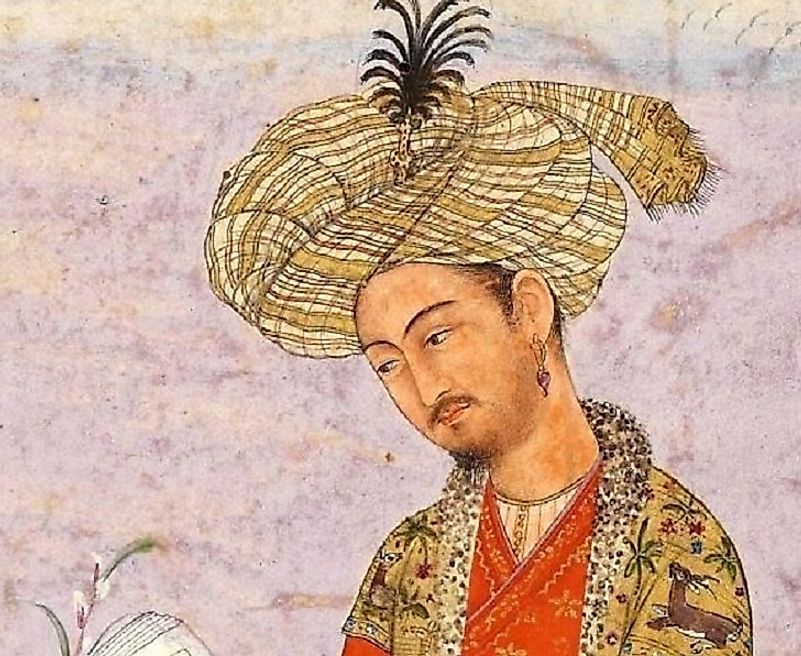Timeline Of The Mughal Dynasty

The Mughal Empire, descendants from the Mongol Empire of Turkestan in the 15th century, ruled the majority of India and Pakistan during the 16th and 17th centuries. Although this was an Islamic empire, the Mughals tolerated other religions even as they spread Muslim art, faith, and culture. Under their rule, the Mughal Empire centralized the Indian government that had been made up of small kingdoms, introduced an educational system focused on student learning, and created the Urdu language, which is a mix of Persian, Arabic, and Hindi. This article takes a look at some of the first emperors of the dynasty.
Prominent Mughal Dynasty Emperors
The 16th Century
The first emperor of the Mughal Empire was Babur, a direct descendant of Genghis Khan. He was responsible for moving the empire into India. Here, he ruled with religious tolerance from 1526 to 1530. Under Babur, trade with Persia and Europe was encouraged and slavery diminished. This emperor even outlawed killing cows as a sign of respect for Hindus. He is directly responsible for spreading Persian cultural influence throughout the empire.
After Babur’s rule, his son, Humayun, took over ruling the Mughal Empire. His half-brother, the ruler of Kabul and Lahore, was one of many enemies to Humayun and with time took the Punjab and Indus Valley territories from the Mughal Empire. Humayun fought to maintain the empire from 1530 to 1540 but, after war raged against one of his rivals, he was forced to turn to Persia for refuge. He returned to India in 1555 when his rival, Sher Shah Suri, died. He held his position as emperor for another year and managed to take control of over 386,000 square miles.
When Humayun passed away, the empire was handed down to his son, Abu Akbar, who ruled from 1556 to 1605. He made it his mission to retake territory lost during his grandfather’s rule and when his reign ended, the Mughal Empire included most of north, western, and central India. Akbar delegated regional officials to rule over different districts throughout the empire and the success of their assigned district was their responsibility. These positions were delegated to various Hindus which was a relatively progressive idea, that the ruled should be responsible for ruling. He reigned with the utmost religious tolerance and believed that all people should be treated equally, regardless of their religion.
The 17th Century
His son, Jahangir, continued as emperor after Akbar’s death. Under his rule, the empire continued to prosper economically and in religious harmony. He held the emperor position from 1605 to 1627. After Jahangir, Shahryar became emperor briefly from 1627 to 1628. He was killed by his brother, Shah Jahan. Shah Jahan ruled from 1628 to 1658 and is perhaps best known for his contributions to local architecture. His most famous structure is still standing and a popular tourist site, the Taj Mahal. He built the Taj Mahal in honor of his wife and it took 20 years to complete. Other architectural contributions include the Shah Jahan Mosque, with 93 domes, it is one of the biggest in the world.
Mughal Decline
These men are just a few of the Mughal emperors. The empire continued for another 200 years after Akbar though began facing turmoil in the 18th Century. Below is a complete timeline of the Mughal Dynasty emperors.
Fall of the Dynasty
During the 18th Century, the empire saw fighting for its throne which resulted in a war that claimed thousands of lives. This left the emperor in a weakened position and brought about a wave of uprisings throughout the provinces. Their emerging power was too much to deal with for the empire, and thus saw the beginning of its decline. At the same time, England was experiencing the Industrial Revolution. They needed raw goods from India and in order to obtain these materials, the East India Company interfered in the local political turmoil. Gradually, the company gained more and more power within India. Eventually, it established its own military and administrative departments. Shareholders even met to make decisions regarding the British Colonies. By 1813, the British government took away the power that allowed the East India Company’s monopoly and later, the company worked on behalf of the government. In 1857, the Indian Rebellion occurred which prompted the British colonial office to exile the final emperor, Bahadur Shah II, and take complete control of the Indian subcontinent.
Timeline Of The Mughal Dynasty
| Rank | Mughal Ruler | Period of Rule |
|---|---|---|
| 1 | Babur | 1526 – 1530 |
| 2 | Humayun | 1530 – 1540 1555 – 1556 |
| 3 | Akbar | 1556 – 1605 |
| 4 | Jahangir | 1605 – 1627 |
| 5 | Shahryar (de facto) | 1627 – 1628 |
| 6 | Shah Jahan | 1628 – 1658 |
| 7 | Aurangzeb | 1658 – 1707 |
| 8 | Muhammad Azam Shah (titular) | 1,707 |
| 9 | Bahadur Shah I | 1707 – 1712 |
| 10 | Jahandar Shah | 1712 – 1713 |
| 11 | Farrukhsiyar | 1713 – 1719 |
| 12 | Rafi ud-Darajat | 1,719 |
| 13 | Shah Jahan II | 1,719 |
| 14 | Muhammad Shah | 1719 – 1748 |
| 15 | Ahmad Shah Bahadur | 1748 – 1754 |
| 16 | Alamgir II | 1754 – 1759 |
| 17 | Shah Jahan III (titular) | 1759 – 1760 |
| 18 | Shah Alam II | 1760 – 1806 |
| 19 | Jahan Shah IV (titular) | 1,788 |
| 20 | Akbar II | 1806 – 1837 |
| 21 | Bahadur Shah II | 1837 – 1857 |











